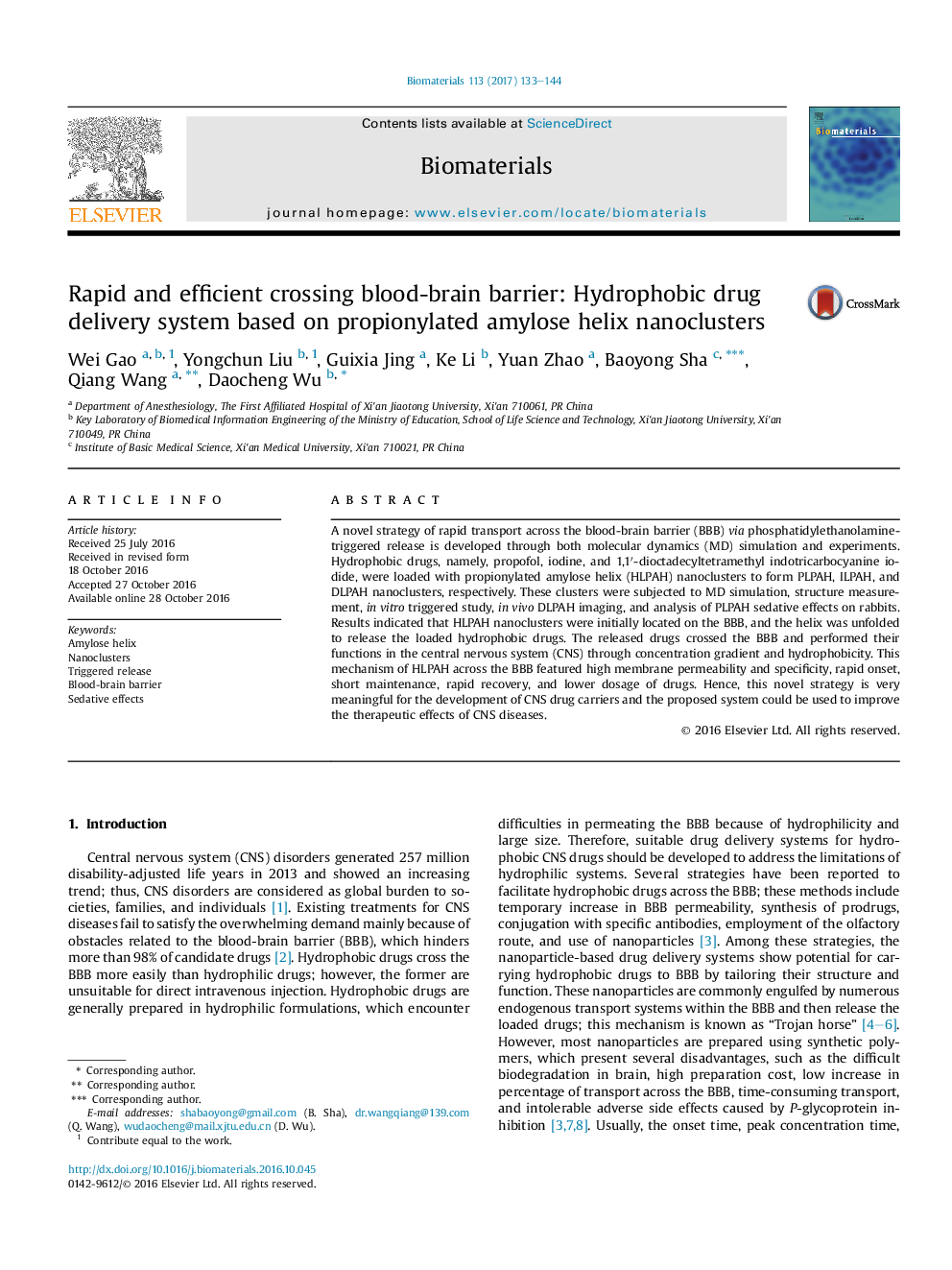| Article ID | Journal | Published Year | Pages | File Type |
|---|---|---|---|---|
| 6451055 | Biomaterials | 2017 | 12 Pages |
A novel strategy of rapid transport across the blood-brain barrier (BBB) via phosphatidylethanolamine-triggered release is developed through both molecular dynamics (MD) simulation and experiments. Hydrophobic drugs, namely, propofol, iodine, and 1,1â²-dioctadecyltetramethyl indotricarbocyanine iodide, were loaded with propionylated amylose helix (HLPAH) nanoclusters to form PLPAH, ILPAH, and DLPAH nanoclusters, respectively. These clusters were subjected to MD simulation, structure measurement, in vitro triggered study, in vivo DLPAH imaging, and analysis of PLPAH sedative effects on rabbits. Results indicated that HLPAH nanoclusters were initially located on the BBB, and the helix was unfolded to release the loaded hydrophobic drugs. The released drugs crossed the BBB and performed their functions in the central nervous system (CNS) through concentration gradient and hydrophobicity. This mechanism of HLPAH across the BBB featured high membrane permeability and specificity, rapid onset, short maintenance, rapid recovery, and lower dosage of drugs. Hence, this novel strategy is very meaningful for the development of CNS drug carriers and the proposed system could be used to improve the therapeutic effects of CNS diseases.
